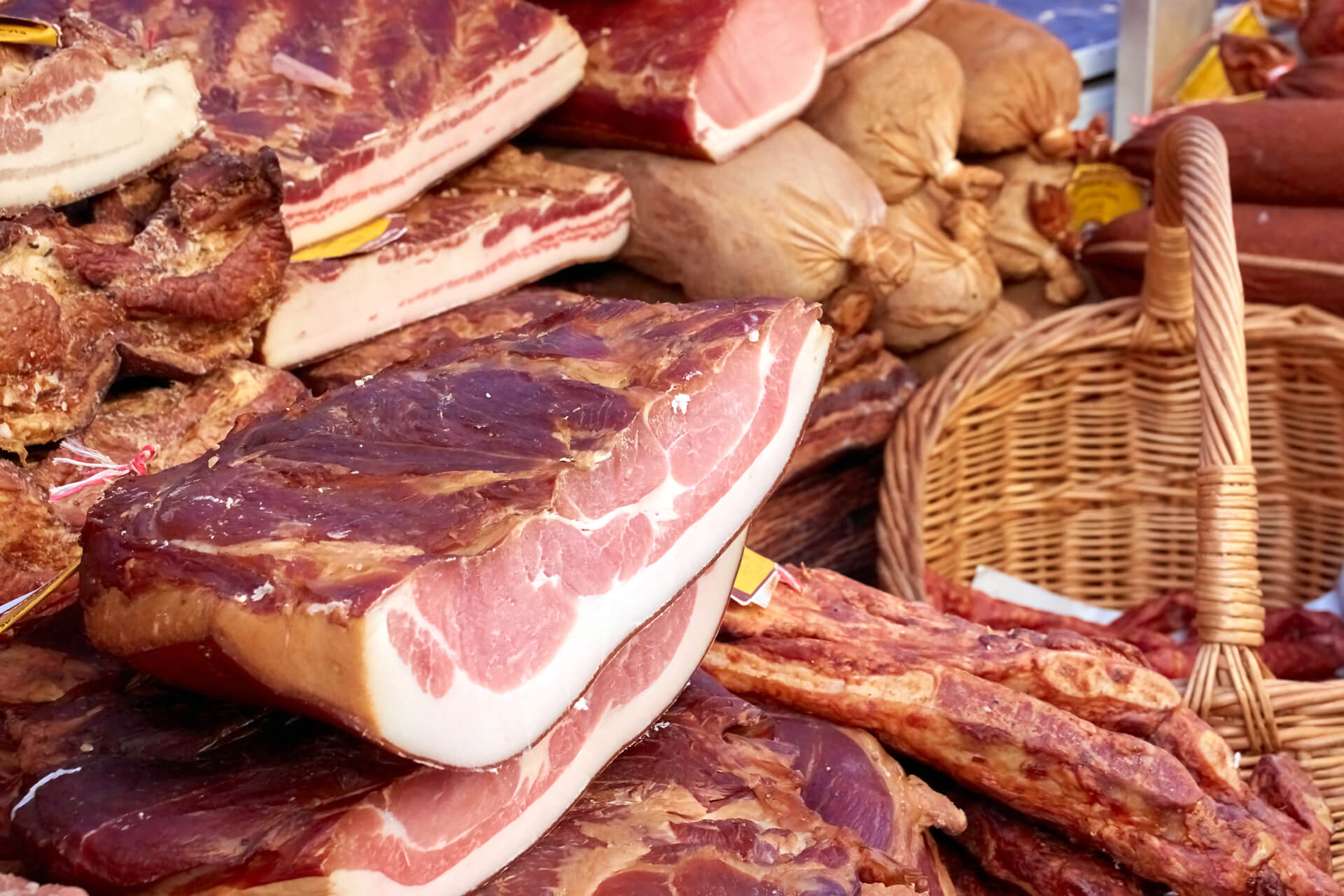Discover Fresh Cuts at Bagley Farms Meat Market Edwardsville IL for Your Following barbeque
Discover Fresh Cuts at Bagley Farms Meat Market Edwardsville IL for Your Following barbeque
Blog Article
Reveal the Art of the Butcher's Cut in a Modern Meat Market
In the ever-evolving landscape of contemporary meat markets, the butcher's cut has transcended its typical roots, merging old-time workmanship with modern techniques. What genuinely sets the modern butcher apart is their ability to build a deeper link in between customers and the origins of their meat.
Evolution of Butchery Methods
The evolution of butchery strategies shows an abundant tapestry of technology and adjustment driven by advancements in modern technology, adjustments in consumer need, and a deeper understanding of meat scientific research. Historically, butchery was a craft gave via generations, with methods refined over centuries to take full advantage of return and flavor. Nevertheless, the commercial transformation introduced automation, changing conventional methods and enabling large-scale handling.
The mid-20th century saw butchery strategies additionally improved by scientific understandings right into muscular tissue biology and meat aging, boosting both tenderness and preference. Developments like vacuum packaging and refrigeration extended product shelf-life, permitting butchers to expand offerings and enhance high quality control. This period likewise marked the surge of specific equipment, such as band saws and meat slicers, which boosted accuracy and effectiveness in meat processing.

Computerized systems currently aid in tracking animal provenance and optimizing cuts to satisfy particular consumer choices. In addition, a renewal in artisanal butchery has actually arised, mixing traditional abilities with modern-day understanding to cater to consumers seeking honest and sustainable meat options.
Comprehending Meat Cuts
Comprehending the complexities of meat cuts is essential for both butchers and customers looking for high quality and value. For butchers, exact cuts show ability and regard for the craft, making certain marginal waste and optimum return.

Understanding muscle make-up is crucial; muscles made use of much more regularly by the animal have a tendency to be tougher and are best matched for slow food preparation techniques, while less-used muscular tissues, like those discovered in the loin, are more tender and suitable for grilling or roasting. Familiarity with these differences empowers consumers to make informed options, enhancing their culinary undertakings.
Choosing Quality Meat
Selecting the best meat includes more than just choosing a visually attractive piece from the display screen. The art of picking high quality meat calls for a critical eye and understanding of particular qualities that indicate quality and quality.
Second of all, think about the marbling, look what i found which describes the white streaks of fat within the muscle. Proper marbling is from this source a vital indicator of inflammation and taste, as it melts throughout food preparation, enhancing the meat's juiciness. Keep in mind, higher marbling often correlates with exceptional quality cuts, such as USDA Prime.
Structure is one more essential variable; meat ought to feel firm to the touch, not slimy or overly soft. Furthermore, bear in mind the scent. Fresh meat must have a tidy, neutral scent, devoid of any type of sour or repulsive smells.
Coupling Cuts With Food Preparation Approaches

Alternatively, harder cuts like brisket and chuck roast are rich in collagen, which breaks down right into gelatin when prepared gradually. These cuts are optimal for braising or sluggish roasting, permitting the meat to tenderize gradually and establish deep, intricate tastes. In a similar way, cuts such as short ribs and pork shoulder make out well with slow-cooking techniques, where extended cooking times transform their robust appearances right into delicious meals.
Lamb shanks and oxtail, which need i thought about this extended cooking to soften, are best candidates for stewing or slow simmering. These methods coax out abundant, hearty tastes while preserving moisture. By comprehending the one-of-a-kind characteristics of each cut, chefs and home cooks alike can boost their culinary developments, making certain each recipe is both pleasing and remarkable.
The Butcher's Function Today
Browsing the evolving landscape of the contemporary meat market, the butcher's duty today expands beyond plain prep work of cuts. Contemporary butchers are culinary craftsmens, educators, and advocates for sustainable methods. They connect the gap between the ranch and the fork by guaranteeing honest sourcing, understanding pet husbandry, and focusing on openness in the supply chain. This shift mirrors the expanding customer demand for high quality over amount, where provenance and animal well-being are extremely important.
Along with crafting precise cuts, butchers currently involve straight with clients, supplying cooking guidance and tailoring selections to match private demands and preferences. Their knowledge in meat aging, marbling, and taste profiles equips customers to make enlightened decisions, enhancing their culinary experiences. This customized service exemplifies the butcher's evolving duty as a relied on expert in the kitchen area.
Moreover, butchers are pivotal in minimizing waste, using entire animals to develop varied items such as sausages and supplies. This extensive strategy not only values the pet yet additionally aligns with modern sustainability objectives. This way, the modern-day butcher symbolizes both tradition and development, adjusting to an ever-changing market while maintaining the virtuosity and honesty of their craft.
Conclusion
The modern butcher's craft delicately weaves standard strategies with modern technologies, emphasizing lasting techniques and ethical sourcing. Mastery in recognizing varied meat cuts and quality signs equips butchers to provide educated referrals, lining up certain cuts with optimum food preparation approaches. This knowledge not just elevates cooking experiences but also reinforces the connection in between customers and the origins of their food. By recognizing historic methods while welcoming contemporary needs, the butcher's role stays important in today's advanced meat market (bagley farms meat market edwardsville il).
Report this page